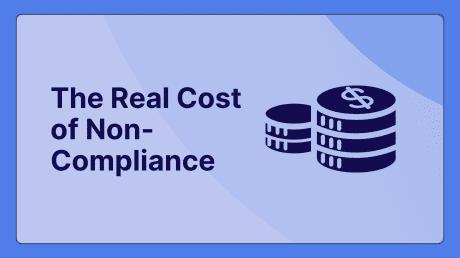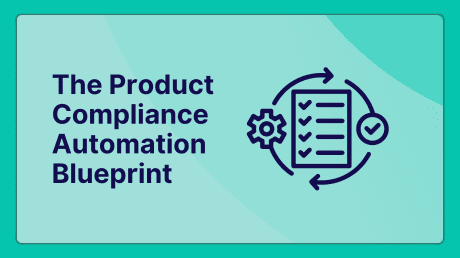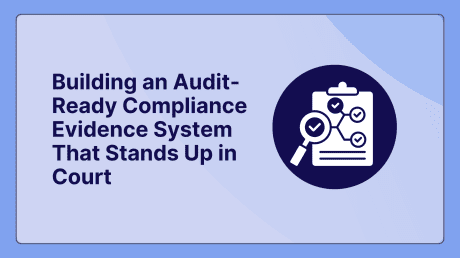
The Biweekly Pulse: 19th – 30th May – Packaging Labeling, Battery Stewardship & POPs Regulation Updates

The Pulse was originally posted on 6th June, 2025. Further regulatory developments may have occurred after publication. To keep up-to-date with the latest compliance news, sign up to our newsletter.
Check out what’s hot in our regulatory world with The Pulse, your biweekly source for global regulatory insights!
This Week’s Trending Sources in C2P
- Packaging Labeling Legislation in Europe: A 2025 Regulatory Update, Whitepaper, May 2025
- EU & UK Product Compliance: What’s Hot in 2025 & Beyond, Webinar Presentation, May 2025
- EU: Omnibus Simplification Package IV, Q&A Document, May 2025
What is Our Content Team Talking About?
New U.S. State Legislation: Nebraska’s Safe Battery Collection and Recycling Act
by Corine Laurijsen, Senior Regulatory Compliance Specialist & Team Lead
On May 20, 2025, the State of Nebraska enacted Legislative Bill 36, that contains in Sections 1 to 17 the Safe Battery Collection and Recycling Act.
The Act covers the collection and recycling of portable and medium format single-use and rechargeable batteries, as defined, and battery containing products, excluding certain electronic equipment. The Act will enter into force on September 9, 2025, with the following compliance deadlines:
- By January 1, 2027:
Battery stewardship organizations (BSOs) under the act need to submit battery stewardship plans to the Nebraska Department of Environment and Energy (NDEE) for review and approval. The Act sets the requirements of the plans.
A battery stewardship organization shall pay a fee to the department upon approval of a plan or on January 1, 2027, whichever is later, and on an annual basis thereafter. - By January 1, 2028:
Producers or retailers are restricted from selling, offering for sale, or distributing for sale any covered battery or battery containing product unless
– the producer of the covered battery or battery containing product is a member of a battery stewardship organization operating under a battery stewardship plan;
– the covered battery or battery in the battery containing product is marked with an identification of the producer of the battery.
A person may dispose of a covered battery only by delivery to a collection site or collection event operated under a battery stewardship plan, unless the battery is regulated as hazardous waste. Mixing with recyclable material, municipal waste, or waste intended for burning or incineration, disposal in a landfill, or burning or incineration of covered batteries is not allowed. - By January 1, 2029: Producers or retailers are restricted from selling, offering for sale, or distributing for sale any covered battery or battery containing product unless properly marked to ensure proper collection and recycling by
– identifying the chemistry of the battery;
– including an indication that the battery should not be disposed of as household waste. - By June 1, 2029 and annually thereafter: Battery stewardship organizations implementing a battery stewardship plan shall submit annual reports to the department. The Act sets the requirements of the reports.
Any person who violates the Safe Battery Collection and Recycling Act, other than a violation of section 12 of this Act, shall be subject to a civil penalty of ten thousand dollars for each violation. Any person who fails to pay the fee required under this Act shall also be subject to a civil penalty of ten thousand dollars.
What Are Our Knowledge Partners Talking About?
EU POPs Regulation Update: UV-328 and Additional Substances
by RINA
Regulation (EU) 2019/2020 implements the provisions of the international Stockholm Convention on POPs in the EU where appropriate. Nearly all countries globally are signatories to this convention which effectively bans the manufacture and use of over 30 POPs substances. This legislation also affects how wastes that contain POPs may be treated. The review of UV-328 has now concluded,i with the Commission adopting the addition of the substance to Annex I of the EU POPs Regulation, which has measures which aim to eliminate the production and use of the listed chemicals. Once adopted, it will enter into force 20 days from the date of publication for any articles not already in use in the Union before the restriction is implemented, or excluded via a listed derogation.
UV-328 (EC 247-384-8)
UV-328 is used as a UV absorber to protect surfaces from discoloration and degradation under UV/sunlight. Most of its use is in surface coatings (e.g. clear coat automotive finishes), as an additive in plastics (e.g. transparent plastics, food packaging, PVC) and in personal care products. Additionally, it is used in construction materials, fillers, surface treatments, adhesives, paints/lacquers/varnishes, printing inks, consumer fragrances, fabric/textile/leather products and inert pesticides. Its recommended use as a UV absorber has been for polyolefins, polyurethanes, PVC, polyacrylate, epoxy and elastomers.
Other POPs Substances and Jurisdictions
It is worth noting that other substances are in the process of being added to the EU POPs Regulation:
- Dechlorane Plus- a flame retardant used in plastics and adhesives and is an alternative to decaBDE (decabromodiphenyl ether).
- Medium-chain chlorinated paraffins (MCCPs)- used as a plasticizer and flame retardant in PVC, adhesives, sealants, paints & coatings, rubber compounds, and textiles.
- Long-chain perfluorocarboxylic acids (PFCAs, with carbon chains of between nine and twenty atoms)- used as intermediates in per and polyfluorinated alkyl substances (PFAS), used to make fluorotelomer products such as fire-fighting foams, grease-resistant food packaging, textiles, cosmetics, textiles, electronics, and inks.
- Chlorpyrifos- pesticide banned in the EU since 2019.
Although the focus of this article is the EU’s implementation of the substances, as the Stockholm Convention is implemented in the majority countries globally, there are many similar updates in other countries also occurring. Of particular note, the UK’s original implementation of these substances with limited derogations has been changed, and now reflects the same derogations as the Stockholm Convention after significant stakeholder feedback.
Next Steps
UV-328 seems to still be widely used globally so manufacturers will need to ensure that it is replaced to meet the new restriction deadlines outlined by the EU.
What Are Our Clients Asking About?
Are Paper Boxes in Scope of the EU Deforestation Regulation?
Answered by Hannah Janknecht, Regulatory Compliance Specialist
Paper boxes would fall under Chapter 48 on Paper and paperboard (see here for the full list of the Combined Nomenclature, i.e. 4819 covers cartons and boxes: Commission Implementing Regulation (EU) 2024/2522 of 23 September 2024 amending Annex I to Council Regulation (EEC) No 2658/87 on the tariff and statistical nomenclature and on the Common Customs Tariff).
The Annex of the EUDR states that packing cases and boxes etc are not covered if they are ‘used exclusively as packing material to support, protect or carry another product placed on the market’. At the moment, this reference can only be found under HS Code 4415, but the EU FAQ document clarifies that this also applies to other types of packaging and that a current draft amendment to the EUDR will also extent the exemption to labels.
This means that packaging is exempt if it is placed on the market to carry or protect another product. This however only applies if the packaging is presented with the products therein, whereas in your case it seems that you are importing empty packaging boxes into the EU and place the products in the boxes after they have already been imported. In this case, the packaging and labels are indeed subject to the EUDR.
This becomes a bit more clear when looking at the examples provided in the Commission’s EUDR guidance document on page 33.ng F-gases, to encourage the use of lower global warming potential (GWP) alternatives. Meanwhile, other countries, such as France, Poland, Germany, and Sweden, have implemented an environmental tax that likely includes F-gases.
Stay Ahead Of Regulatory Changes with The Pulse
Want to stay on top of the regulatory changes featured in this edition of The Pulse?
All insights come directly from C2P – the trusted compliance platform used by over 300 of the world’s leading brands. With coverage across 195+ countries, C2P empowers you to achieve, maintain, and expand market access faster and with confidence.
C2P is an enterprise SaaS platform designed to meet your unique compliance needs. It brings together everything in one place – regulations, standards, requirements, and evidence – so you can manage compliance across the enterprise with ease.
Need more? Our tailored add-on packages unlock use-case-specific solutions, enriched global regulatory content, and direct access to a global team of subject matter experts and professional services.
C2P is your key to unlocking global market access.
- Accelerate time-to-market for products
- Reduce non-compliance risks that impact your ability to meet business goals and cause reputational damage
- Enable business continuity by digitizing your compliance process and building corporate memory
- Improve efficiency and enable your team to focus on business critical initiatives rather than manual tasks
- Save time with access to Compliance & Risks’ extensive Knowledge Partner network
Keep Your Finger on the Pulse of Regulatory News!
Join 30,000+ compliance professionals for monthly updates on hot compliance issues, market insights on the latest trends, and free regulatory webinars and whitepapers








